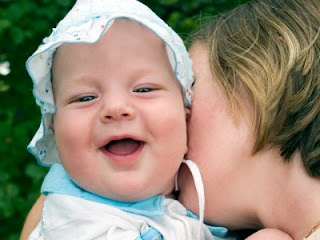 I am sure that every parent out there remembers the first time they saw their baby smile. My son smiled for the first time on Christmas morning 2005 and I remember it very well because I must have taken 50 pictures of the event.
I am sure that every parent out there remembers the first time they saw their baby smile. My son smiled for the first time on Christmas morning 2005 and I remember it very well because I must have taken 50 pictures of the event.
Scientists at the Baylor College of Medicine say that seeing your own child smile actually activates the pleasure receptors in the brain typically associated with food, sex — and drug addiction.
“It may be that seeing your own baby’s face is like a ‘natural high,’ said Lane Strathearn, an assistant professor of pediatrics at Baylor and and Texas Children’s Hospital who studied the brain reactions of 28-first time moms.
Strathearn and his team used functional magnetic resonance imaging to scan the mothers’ brain reactions to photographs of their own 5-month to 10-month-old babies and those of others in three emotional states: happy, neutral and sad.
As expected, the sight of their own happy babies sent blood rushing to the moms’ brain regions associated with dopamine, a neurotransmitter that plays an important role in addiction. The spike rewarded the mothers with a neural kick that prompted them to want to take action to care for their babies, Strathearn said.
Surprisingly, however, the moms in the study didn’t respond as strongly to their own infants when their expressions were neutral — or when they were in distress. The neural scans showed the mothers responded to all crying infants about the same, by activating areas of the brain involved in conflict.
“We were expecting a different reaction with sad faces,” Strathearn said. Although it’s not exactly clear, that could mean that mothers are wired to react to all crying babies, not just their own.






